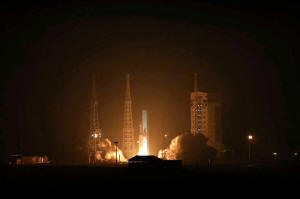|
The launch comes as the United States and European countries
accuse Iran of transferring ballistic missiles to Russia that
would be likely used in its war with Ukraine within weeks. Iran
has denied this.
The Chamran-1 satellite, which was launched into space by the
Qaem-100 satellite carrier, was put into a 550-kilometre
(340-mile) orbit and its first signals had been received, the
media said, adding that the solid fuel carrier was designed and
built by the Aerospace Force of the Revolutionary Guards.
The primary mission of the satellite, which weighs 60 kg (132
pounds), "is to test hardware and software systems for
demonstrating orbital maneuvering technology in height and
phase," according to state media.
In January, Iranian media reported that the Sorayya satellite
had been launched into a 750 km orbit, the highest by the
country so far.
The U.S. military alleges the long-range ballistic technology
used to put satellites into orbit could also allow Tehran to
launch long-range weapons, possibly including nuclear warheads.
Tehran denies its satellite activities are a cover for ballistic
missile development and says it has never pursued the
development of nuclear weapons.
Chamran-1's other mission was to "evaluate the cold gas
propulsion subsystem in space systems and the performance of the
navigation and attitude control subsystems", state media
reported.
Iran, which has one of the biggest missile programs in the
Middle East, has suffered several failed satellite launches in
recent years due to technical issues.
(Editing by Mark Potter and Alex Richardson)
[© 2024 Thomson Reuters. All
rights reserved.]
Copyright 2022 Reuters. All rights reserved. This material may
not be published, broadcast, rewritten or redistributed.
Thompson Reuters is solely responsible for this content.

|
|




